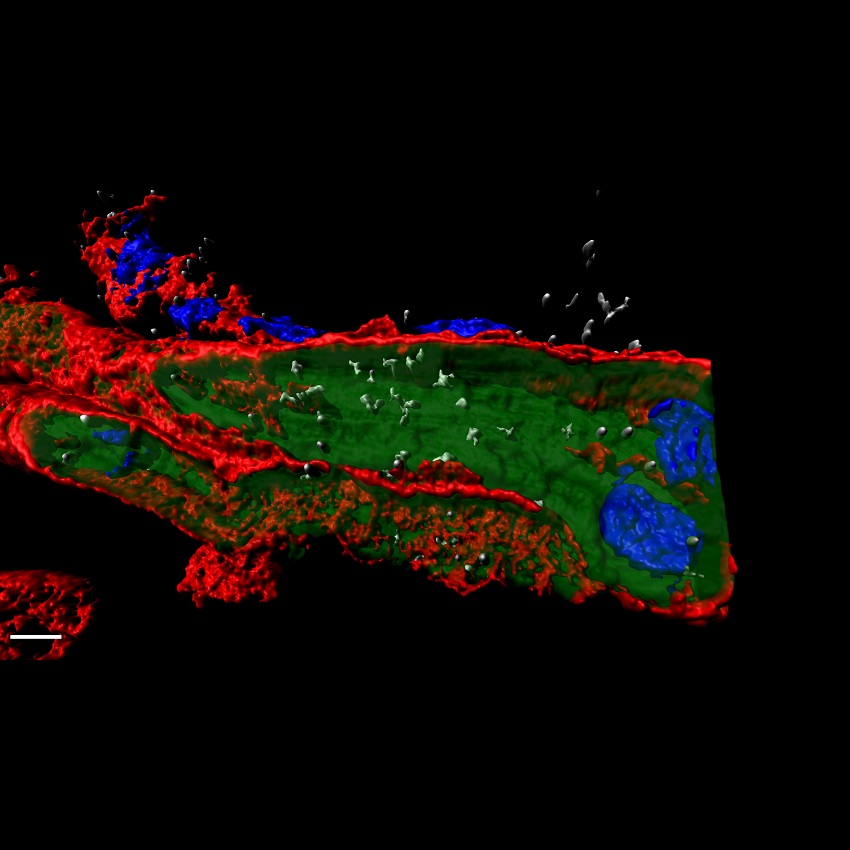Cardiovascular Research: Spanish scientists discover how the flu virus injures the heart
The study shows that the replication of flu virus particles infecting the heart blocks the transmission of cardiac electrical impulses
A study by a consortium of Spanish research groups has described the potentially fatal cardiac effects of infection with the influenza virus, especially more virulent forms. The research team showed that the replication of flu virus particles infecting the heart blocks the transmission of cardiac electrical impulses, which can lead to death. The results, published in Cardiovascular Research, highlight the potential value of testing patients with acute cardiac disease for flu infection during seasonal outbreaks of the disease. The study was carried out by scientists at the Centro Nacional de Investigaciones Cardiovasculares (CNIC), the Consejo Superior de Investigaciones Científica (CSIC), and the Centro de Investigación Biomédica en Red de Enfermedades Respiratorias (CIBERES), together with input from the Centro de Investigación Biomédica en Red de Enfermedades Cardiovasculares (CIBERCV) and the Hospital Clínico San Carlos. This multidisciplinary study also included the participation of scientists at the Universities of Michigan and South Florida in the United States.
The investigators assessed the mechanisms of heart injury in mice infected with the flu virus as well as in cardiac muscle cells derived from human pluripotent cells.
Flu is predominantly a respiratory infection, but the influenza virus can also cause injury outside the respiratory system, including cardiac complications that can result in myocardial infarction. In the 2009 flu pandemic, almost 5% of patients had cardiac complications, and more than 40% of those patients were admitted to hospital intensive care units. Despite this, there have been few studies into how the flu virus affects the heart and the molecular mechanisms leading to cardiac alterations.
The research team analyzed the response of mice to infection with different viral strains from the 2009 flu pandemic. The most virulent strain caused direct cardiac injury, and the mice died prematurely, with symptoms similar to those of patients who developed acute heart disease during the pandemic.
Lead investigator Ana Falcón, a member of Amelia Nieto’s lab at the Centro Nacional de Biotecnología (CNB-CSIC) and CIBERES, explained: “We found infection in the Purkinje cells, which are essential for transmitting electrical impulses in the heart. This was accompanied by cardiac inflammation early during infection, especially with the most virulent strain.”
Joint first author David Filgueiras Rama, of the CNIC, Hospital Clínico San Carlos, and CIBERCV, explained that “replication of the virus in heart cells causes a failure in the transmission of cardiac electrical impulses, and this can result in premature death.” Crucially, the scientists found that the amount of virus in heart tissue was not directly related to the level of infection in the lungs, suggesting that “the virus can damage the heart even when it has only a minor effect on the lungs."
More virulent forms of the virus remain in the heart for longer, highlighting the need for early screening for flu infection in acute heart disease patients
David Filgueiras’s group used advanced cardiac magnetic resonance imaging technology and histological techniques to characterize cardiac injury in the infected mice and to precisely identify the cardiac electrical disorders associated with infection of the heart. The group also used molecular biology studies to identify early inflammatory and fibrotic mechanisms underlying the myocarditis and severe heart rhythm disorders observed during flu epidemics.
Early detection
The analysis of cardiac muscle cells derived from human pluripotent cells showed that the most virulent viral strain persists in the heart for longer and triggers changes, including the modification of ion channels responsible for the transmission of cardiac electrical impulses. These results provide a molecular explanation for the early death of infected mice and suggest that screening for infection in acute cardiac disease patients during seasonal flu outbreaks could enable early diagnosis and treatment.
“These findings highlight the potential benefit of early detection of the virus in patients with acute heart disease during flu outbreaks,” concluded Filgueiras.











